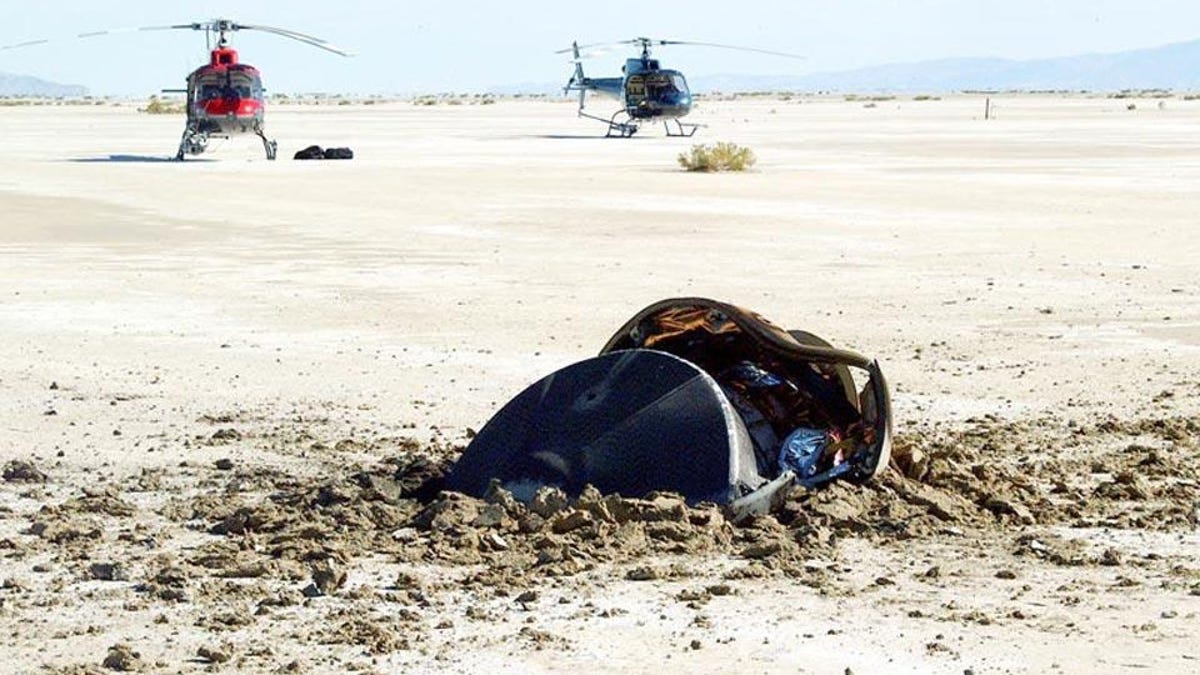NASA flying saucer crash photo has a real history behind it
Did a flying saucer really crash-land in the Utah desert? Sort of.
As far as headlines go, it's a doozy. NASA shared an image on Sunday as part of its Astronomy Picture of the Day series and titled it with the whimsical phrase "Flying saucer crash lands in Utah desert."
If that's as far as you read, then you might think NASA is finally fessing up about aliens visiting Earth. But that's not the case. It's just a fun reference to what the 2004 image actually shows: the remains of the space agency's Genesis mission.
Genesis launched in 2001 to study the sun. The spacecraft include a sample-return capsule that was shaped a bit like a flying saucer. The capsule crash-landed back on Earth in 2004 when its parachutes failed to open.
"The Genesis mission had been orbiting the Sun collecting solar wind particles that are usually deflected away by Earth's magnetic field," says NASA, noting that some of the samples were still in good condition despite the hard landing.
NASA tracked the reentry by radar and sent chase helicopters after it. The US Air Force 388th Range Squadron snapped the photo of the capsule partially buried in the Utah desert.
The image is making the internet rounds this week due to NASA's picture-of-the-day release combined with the catchy title, but it's not actually new. It shows up in a gallery of photos on the official mission site.
The photo's headline isn't untrue, it's just that it was an IFO (identified flying object) and not a UFO. Fans of alien visitation theories will be disappointed.


